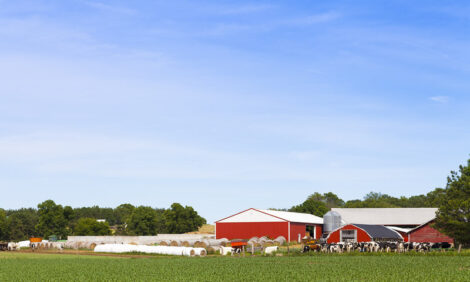



Raising Dairy Heifers On Pasture
Heifers are the foundation of a dairy enterprise and replacements represent a significant investment, according to Anne Fanatico, NCAT Agriculture Specialist.Introduction
Information about raising replacement heifers on pasture is becoming more available as producers begin to adopt grass-based systems to alleviate energy costs associated with raising feed crops.
Traditionally, dairy farmers have raised their own heifers, but custom raising of heifers is now becoming an enterprise in its own right. This can be an opportunity for supplemental income or a farm’s main operation.
Raising cattle on pasture necessitates management decisions about grazing. Controlled grazing or management-intensive rotational grazing (MIG) of pastures can increase animal production and maintain resilient, diverse and nutritious pastures. Controlled grazing involves grazing and then resting several pastures in sequence. The rest periods allow plants to recover before they are grazed again. Although an intensive system has initial costs of electric fencing and watering investments, as well as increased management, many farmers report better profitability.
When planning a feed supplement programme for pastured heifers, first determine the type and amount of forage the animal is eating, and then consider the nutritive content of the forage. Most cool-season grass-legume pastures provide more crude protein than is needed by the animal. In this case, a small amount of grain or bypass protein will stimulate gain. Native warm-season grasses and some legumes, such as birdsfoot trefoil, tend to be less soluble in the rumen and have a higher bypass protein availability. Producers can aim for the same heifer growth rates on pasture that are possible with confi nement feeding of grain.
University of Minnesota researchers have documented gains and costs of raising dairy heifers in a feedlot versus raising them on pasture. In their study, the feedlot heifers had an average daily gain (ADG) of 2 pounds per head while the pasture heifers had an ADG of 2.04, with a total cost per head per day of $1.52 versus $0.95 respectively. The study was called Tale of Two Heifer-raising Systems: Feedlot and management intensive grazing go head to head.
Custom heifer raising
It is increasingly common for heifers to be raised by contract on specialty farms. Hiring out the raising of replacement heifers is advantageous to a milk producer for at least two reasons. First, it saves labor on the dairy farm and second, it frees all the forage or other feed to be utilised by milk-producing animals. However, mingling heifers from several different farms is a concern for health reasons.
Custom raising of heifers is not recommended as an enterprise for beginning farmers because of the level of knowledge and experience needed to manage young animals. Grazing expertise is useful since pasture and grazing management are key to enterprise sustainability and profitability. Finding heifers to raise may be diffi cult at first, but a good reputation and track record will be assets in securing animals. Breeding expertise may also be important depending on contractual obligations.
Mr Tom Wrchota in Wisconsin received a Sustainable Agriculture Research and Education (SARE) producer grant to custom graze heifers and summarised his results in a report called Developing Dairy Heifers on Pasture. According to the SARE report, “the most surprising aspect about the development and successful implementation of a seasonal custom heifer grazing programme was: the grant programme started with very modest amounts of capital, almost no experience and a limited cash/no debt strategy.”
Costs of raising heifers
The costs associated with a custom heifer raising enterprise include labour, feed, facilities and fencing and veterinary costs. Feed costs and labor costs are usually the largest costs to a custom grazier. High-quality pasture and good grazing management can help reduce these costs and ensure a profitable, sustainable enterprise.
April 2010


